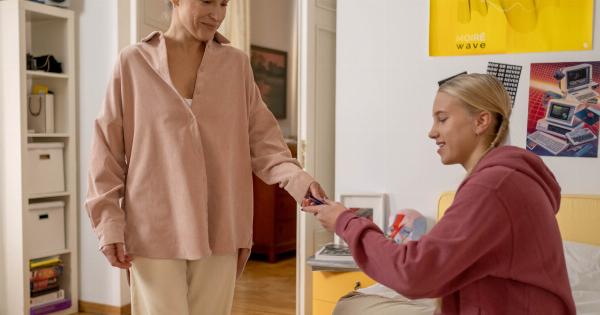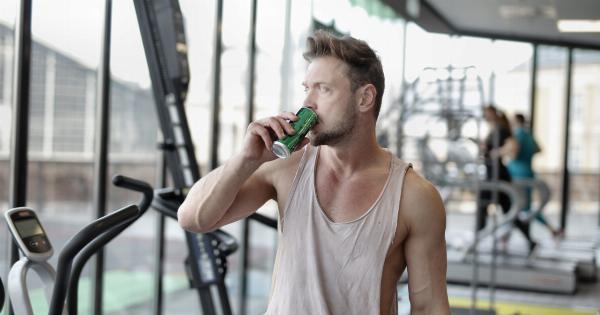For many women, having their period means days with cramps, bloating, and other unpleasant symptoms. The last thing they may be thinking of is going for a run or hitting the gym.
However, exercising during your period can actually have many benefits, including reducing pain and improving mood and energy levels. The key is to understand your body’s needs and limitations during this time of the month. Here is what you need to know about exercising during your period.
Understanding Your Cycle
The menstrual cycle is a complex and dynamic process that involves various hormones, physiological changes, and mood fluctuations. On average, a menstrual cycle lasts about 28 days, although this can vary from woman to woman.
The first day of the cycle is considered to be the first day of menstrual bleeding, which usually lasts for about 3-7 days. After that, the body goes through different phases, each with its own characteristics. Here are the main phases of the menstrual cycle:.
Menstrual Phase
This is the first phase of the menstrual cycle, which starts with the first day of the period. During this phase, the uterus sheds its lining, which is accompanied by bleeding.
Some women may experience cramps, headaches, fatigue, or mood swings during this phase. The menstrual phase usually lasts for 3-7 days, although it can be longer or shorter.
Follicular Phase
This is the second phase of the menstrual cycle, which starts right after the menstrual phase. During this phase, the body prepares for ovulation by producing follicle-stimulating hormone (FSH) and luteinizing hormone (LH).
FSH helps to stimulate the growth of follicles (small sacs) in the ovaries that contain eggs. LH helps to trigger the release of the mature egg from the follicle, which is called ovulation. This phase usually lasts for about 7-10 days.
Ovulatory Phase
This is the third phase of the menstrual cycle, which starts after the follicular phase. During this phase, the mature egg is released from the ovary and travels through the fallopian tube to the uterus.
This is the most fertile time of the cycle, and if the egg is fertilized by sperm, it may result in pregnancy. This phase usually lasts for about 2-3 days, although it can be as short as a few hours or as long as a day or two.
Luteal Phase
This is the last phase of the menstrual cycle, which starts after ovulation. During this phase, the follicle that released the egg turns into a structure called the corpus luteum, which produces progesterone.
Progesterone helps to thicken the uterine lining and prepare it for a possible pregnancy. If pregnancy does not occur, the corpus luteum breaks down, and the levels of estrogen and progesterone drop, leading to the start of a new cycle. This phase usually lasts for about 10-14 days.
Benefits of Exercise During Your Period
Now that you know the different phases of the menstrual cycle, you can better understand how exercise can affect your body at different times. Contrary to popular belief, exercising during your period can have many benefits, including:.
Reducing Pain and Cramps
One of the most common symptoms of menstruation is menstrual cramps, which can range from mild discomfort to severe pain. Exercise can help to alleviate these cramps by increasing blood flow and releasing endorphins, which are natural painkillers.
This effect is similar to the relief that some women feel after taking over-the-counter pain medication.
Improving Mood and Energy Levels
Another common symptom of menstruation is mood swings, which can be caused by hormonal fluctuations. Exercise can help to boost mood and energy levels by releasing feel-good chemicals such as dopamine, serotonin, and norepinephrine.
This effect can also help to reduce feelings of fatigue and lethargy that some women experience during their period.
Reducing Bloating and Fluid Retention
Many women experience bloating and fluid retention during their period, which can make them feel uncomfortable and self-conscious.
Exercise can help to reduce these symptoms by increasing lymphatic drainage and promoting the elimination of excess fluids through sweating and urination. This effect can also help to improve body image and self-esteem.
Tips for Exercising During Your Period
While exercising during your period can have many benefits, it is important to listen to your body and make adjustments as needed. Here are some tips for exercising during your period:.
Choose the Right Type of Exercise
Not all exercises are created equal when it comes to menstruation. Some activities may be more comfortable and beneficial than others, depending on your symptoms and preferences.
For example, low-impact exercises such as yoga, Pilates, or stationary cycling may be gentler on your body than high-impact exercises such as running, jumping, or heavy lifting. However, if you are used to doing high-impact exercises and feel comfortable with them, there is no reason to avoid them during your period.
Stay Hydrated
Drinking enough water is important for overall health, but it is especially important during your period, when your body is losing more fluids than usual.
Make sure to drink plenty of water before, during, and after exercise to stay hydrated and avoid dehydration-related symptoms such as dizziness, headache, or nausea. You can also drink other fluids such as herbal tea, coconut water, or sports drinks for additional electrolytes and energy.
Dress Comfortably
Wearing comfortable and breathable clothing can make a big difference in how you feel during exercise. Choose clothes that fit well, allow for free movement, and wick away sweat.
Avoid tight-fitting clothes that can restrict circulation or cause chafing, as well as synthetic fabrics that can trap heat and moisture. Opt for natural and breathable fabrics such as cotton, bamboo, or modal.
Listen to Your Body
Perhaps the most important tip for exercising during your period is to listen to your body and respect its signals. If you feel too tired, sore, or uncomfortable to exercise, take a break and rest.
If you experience heavy bleeding, abdominal pain, or other unusual symptoms, consult your doctor before exercising. Remember that your menstrual cycle is unique to you, and what works for someone else may not work for you. Be patient, experiment, and find the exercise routine that suits your needs and preferences.
Conclusion
Exercising during your period can have many benefits, from reducing pain and cramps to improving mood and energy levels. However, it is important to understand your body’s needs and limitations during this time of the month.
By choosing the right type of exercise, staying hydrated, dressing comfortably, and listening to your body, you can make exercising during your period a positive and empowering experience.






























